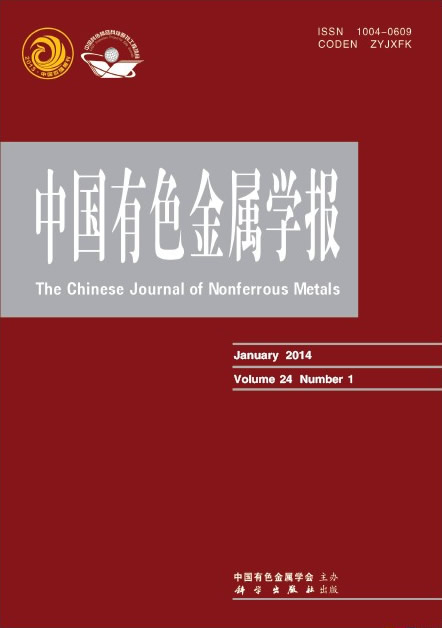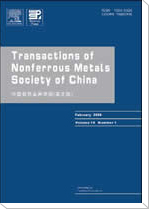中国有色金属学报(英文版)
Transactions of Nonferrous Metals Society of China
| Vol. 34 No. 2 February 2024 |
(1. College of Materials Science and Engineering, Taiyuan University of Technology, Taiyuan 030024, China;
2. National Key Laboratory for Precision Hot Processing of Metals, Harbin Institute of Technology, Harbin 150001, China;
3. Engineering Research Center of Advanced Metal Composites Forming Technology and Equipment of Ministry of Education, Taiyuan University of Technology, Taiyuan 030024, China)
Abstract:The electropulsing-assisted bending test was carried out on Ti-6Al-4V alloy sheet with the effective current density of 0-3.2 A/mm2 and duty ratio of 10%-70%. The results show that the bending forming displacement increased from 9.15 to 15.60 mm with increasing effective current density from 0 to 2.4 A/mm2. The crack changed to be shallow and small at the same time. Besides, the springback angle decreased as the effective current density increased at the bending displacement of 8 mm. Duty ratio also affected bending angle, where 30% duty ratio led to the lowest bending angle of 135.0°. The thermal stability temperature increased with increasing effective current density and varied non-monotonically with duty ratio. In addition, grain coarsening, {0001} texture strengthening and sub-grain development were observed during electropulsing-assisted bending. The electropulsing decreased dislocation density and accelerated dislocation rearrangement, the rearranged and piled-up dislocation inside α grains promoted sub-grain structure formation, which improved the formability. The contribution of athermal effect made the low-temperature formability of Ti-6Al-4V alloy comparable to that at high temperature.
Key words: Ti-6Al-4V alloy sheet; microstructural evolution; formability; electropulsing-assisted bending; springback; dislocation; athermal effect


